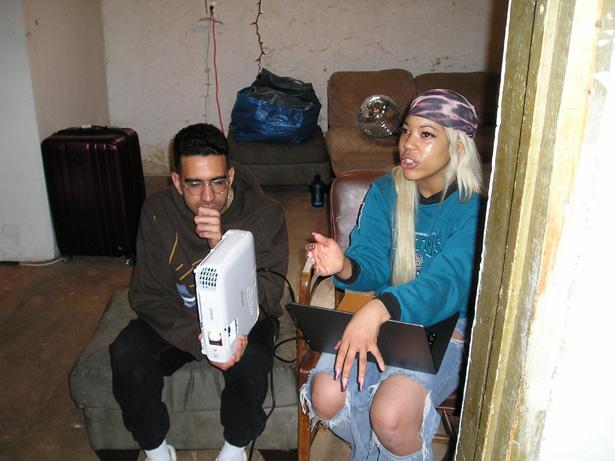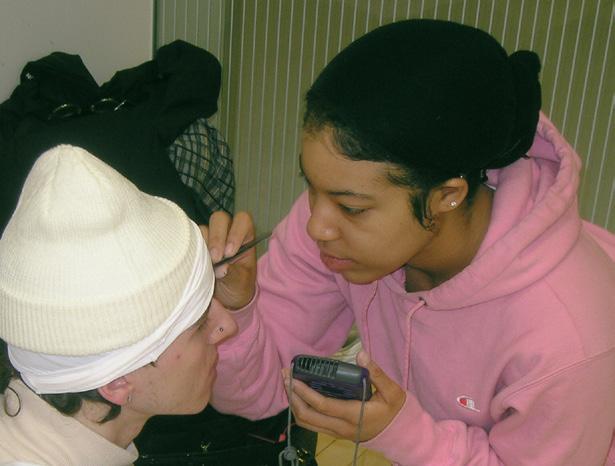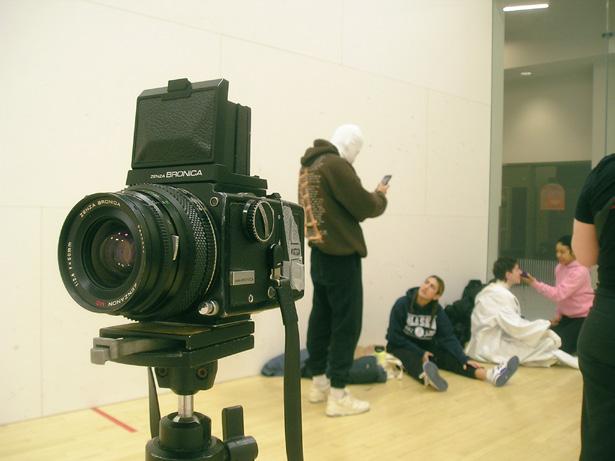Interiors // Exteriors













MORE CONTENT | EVERY MONTH
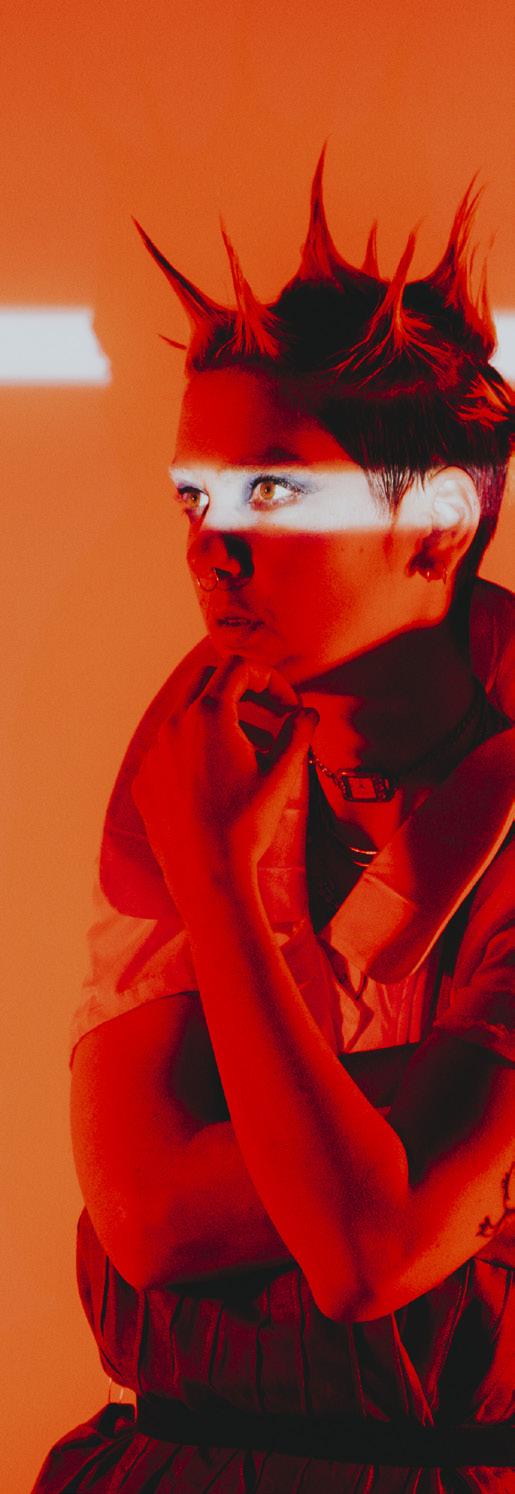
SIGN UP FOR OUR EMAIL LIST TO STAY UPDATED ON ALL OUR LATEST CONTENT




Design Editors
MARGARET LAAKSO
RINO FUJIMOTO
Video Editor SAM RAO
Standford Lipsey Student Publications Building
420 Maynard St, Ann Arbor, MI 48109
MELINA SCHAEFER Editor-in-Chief
Creative Director
SOPHIA GAJDJIS Publisher
SARAH ORY Operations Director SOPHIA AFENDOULIS
Print Fashion Editors ANASTASIA HERNANDO DHRUV VERMA
Digital Fashion Editor MADISON PATEL
Finance Coordinators
MAGGIE CLARK
MAKENZIE KULCYZKI
Human Resources Coordinator
MOLLY KENNEDY
Print Features Editor BROOKLYN BLEVINS
Digital Features Editor
JANICE KANG
Events Coordinator
SENA KADDURAH
Social Media Coordinator

NEHA KOTAGIRI
Print Photo Editors GABRIELLE MACK SAM MCLEOD
Print Beauty Editor
JANAE DYAS
Digital Photo Editor
RILEY KISSER
Public Relations Coordinators IZZY SAUNDERS
KALI HIGHTOWER
Digital Content Editor
JESS CHO
Design Team
Maggie Laakso, Rino Fujimoto, Camille Andrew, Kai Huie, Kimi Lillios, Mary Wurster, Liza Miller, Hannah Salameh, Nick Pippen, Kamryn Almasy, Ashley Glabicki, Terri Kang
Fashion Team
Madison Patel, Kelsea Chen, Olivia Mouradain, Peter Marcus, Sarah Dettling, Angela Li, Ava Wadle, Dana Gray, Darnell Perkins, Elissa Li, Linsey Wozniak, Mia Lollo, Minh Phan, Peyton Benjamin, Quincy Bowles, Quri Kim, Sian Tian, Skye Thompson, Brandon de Martinez, Ankitha Donepudi, Niko Smith, Sidney Vue, Bobby Currie, George Van Haaften, Andy Zhou
Features Team
Brooklyn Blevins, Janice Kang, Nadia Judge, Melissa Dash, Lucy Perrone, Jayde Emery, Tiara Partsch, Meera Kumar, Amina Cattaui, Natasha Martin, Catherine August, Sailor West, Lynn Dang, Shelby Jenkins, Steve Liu, Melissa Werkema, Mya Fromwiller
Photography Team
Riley Kisser, Nolan Lopez, Pearl Thianthai, Oliver Segal, Paulina Rajski, Alexander Kim, Udoka Nwansi, Korrin Dering, Taylor Pacis, Rita Vega, Lindsey Archibald, Alex Lam, Yueshan Jiang, Sam Rao, SinYu Deng, Jessica Cho, Maggie Kirkman, Adrienne Hoffman, Carly Nichols, Nikki Vergara
Videography Team
Sam Rao, Samin Hassan, Eaman Ali, Gianna Galette, Olivia Ortiz, Juana Mancera, Caroline Nichols
Digital Content Team
Street Style Editors
SUREET SARAU ROSALIE COMTE
Jessica Cho, Esther Murray, Shari Frazer, Sophie Ding, Haniya Farooq, Irem Hatipoglu, Iris Ding, Alana Vang, Clare Hong, Kiana Pandit, Ally Chang, Radhika Patel
Finance Team
Maggie Clark, Makenzie Kulcyzki, Elle Donakowski, Suma Moolaveesala, Manvita Battepati, Rendie Zhang, Olivia Jabari
Human Resources Team
Sarah Lindenbach, Lily Watchel, Diya Nambiar
Public Relations Team
Izzy Saunders, Kali Hightower , Harini Shanker, Brandon Cole, Katherine Lambert, Devin Vowels, Ava Ben-David, Ava Ray, Samantha Wright
Events Team
Sena Kaddurah, Tara Nayak, Erin Segui, Shruti Patel, Tiara Blonshine, Paris Rodgers, Allie Cain, Lottie Winegarden
Social Media Team
Neha Kotagiri, Samedha Gorrai, Olivia Sun, Charlotte Foley, Hannah Ding, Aubrey Borschke, Camila Escobar, Ellie Ngassa, Aarya Padhye, Luiza Santos
Street Style Team
Jordyn Hardy, Ernest Hawkes, Ellie Ngassa, Nina Walker, Oliver Segal, Jenna Frieberg, Nikki Vergara, Adam Marakby
Withthe creation of a binary comes the inherent tension between its two nodes. INTERIORS // EXTERIORS is less about each idea separately (if it were, we might consider calling it Interiors or Exteriors, Interiors and Exteriors) but rather how each extreme informs us of some aspect of the other (perhaps I might say that the lines dividing the words function like a division sign, relating one value in terms of the other). Each word is equal, and we cannot have one without the other.
To greet you at the entrance of the Montreal Museum of Fine Arts’ exhibit, Views of Within: Picturing the Spaces we Inhabit, is a quote by Rebecca Solnit that says “The desire to go home is a desire to be whole. To know where you are, to be the point of intersection of all the lines drawn through all the stars.” Home itself is an intersection of the definitions of “interior”; it is a space that allows us to explore our interiority safely, and it is also the most personal interior where we can leave the residue of our lives and personalities.
In “Garden of Dreams”, our features writers come together to tell the stories of their own personal spaces. Where Sailor West struggles to reconcile her father’s belief “houses are just empty spaces” with her own desire for a space of her own, Steve Liu uses home as a zone in which memories and dreams can coexist and create new meaning. All the writers write on the topic through their lens of biases and experiences, and this is demonstrated in the manner in which they speak about home and particularly their bedrooms.
But while home can offer a space of comfort and self expression, it can also entrap us in our own fears or anxieties. In “Breathing Space” we are faced with the tension of the space and the restrictive clothing; it is at once comforting and also threatening. Are we comforted by spaces of privacy, or do they serve to confine us?

If we think of interiors as a private space in which we can explore our interiority, then we can think of exteriors as public spaces, or spaces of performance. These are spaces in which we are required to express ourselves and aspects of our values and personalities externally.
As we endeavor to externalize our interior world, we curate those aspects which we choose to bring to the surface. In this process of selection, we create a version of ourselves that is different from that which exists in the interior. In some cases, like in “Feast for the Eyes” or in Shelby Jenkin’s piece, “A Guide to Faking It”, this might be a process of reduction or destruction. However, in some ways, bringing our interior world to the exterior offers an opportunity for authentic connection, such as in “Skin Deep.”
Virginia Woolf ends her final novel, Between the Acts, with the phrase “the curtain rises. They speak.” Our lives can be understood as a series of performances. Perhaps as we grow older or more confident, our interior and exterior worlds can converge. Or perhaps the world will always expect or require a certain amount of performance from us.
Lately I’ve been thinking a lot about a piece by the artist duo Elmgreen and Dragset titled “Home is the Place You Left.” In this phrase, the definition of home is wrapped up in the fact that it exists as a place separate to the exterior world. It also necessitates the viewer’s leaving of this home. I hope that reading this magazine feels like leaving and returning home all at once, and can help you to explore the complicated experiences of such an endeavor.
Melina Schaefer Editor-In-ChiefUnbeknownst to some, within each of our hearts lies a delicately tucked away box. Its contents are individualistic and invaluable, the lid only daring to open for those who can call themselves the owner. Perhaps you reach inside more than others. For me, after a particularly grueling day or mental rough patch, I dig deep and clutch these sacred treasures, the pieces of myself reserved for my eyes only.
If you’re more courageous than I, maybe you find yourself meticulously collecting your most intrinsic pieces, and carefully dropping them into the hands of those you hold dear. Leaving them the potential to alter something as soft and malleable as your personality, you can only hope they do so in a way that’s for the better.
As humans, we’re incredibly impressionable and complex. With so much room for growth and exploration, are we continually colored by our surroundings, or are we constantly changing the landscape as we come across it? Could it be a combination of both?
In an effort to better understand what truly makes us ourselves, INTERIORS // EXTERIORS explores the transactional nature of self-portrayal. Don’t put yourself fully on display; don’t compartmentalize to the point of fiction. Instead, carefully choose what to give and take, partake in the performance that is living both authentically and ideally. When it’s time for the curtain call, which aspects of yourself will you choose to leave behind in the wings?
In creating this issue, our writers, photographers, designers, and editors have all offered you a small piece of their being. They’ve braved the thought of judgment and allowed their thoughts, dreams, and ideas to materialize on the pages before you, digging deep and using their craft as the vessel that holds the key to the box inside their heart. As you flip through, consider how their vulnerability spills onto the pages and its influence on your own innermost thoughts.
Upon reading, I hope you’re able to carve out a place for this issue in your own heart. I know I have. So with outstretched hands, I extend this little piece of myself to you.
Please hold onto it gently,
Brooklyn Blevins Print Features Editor

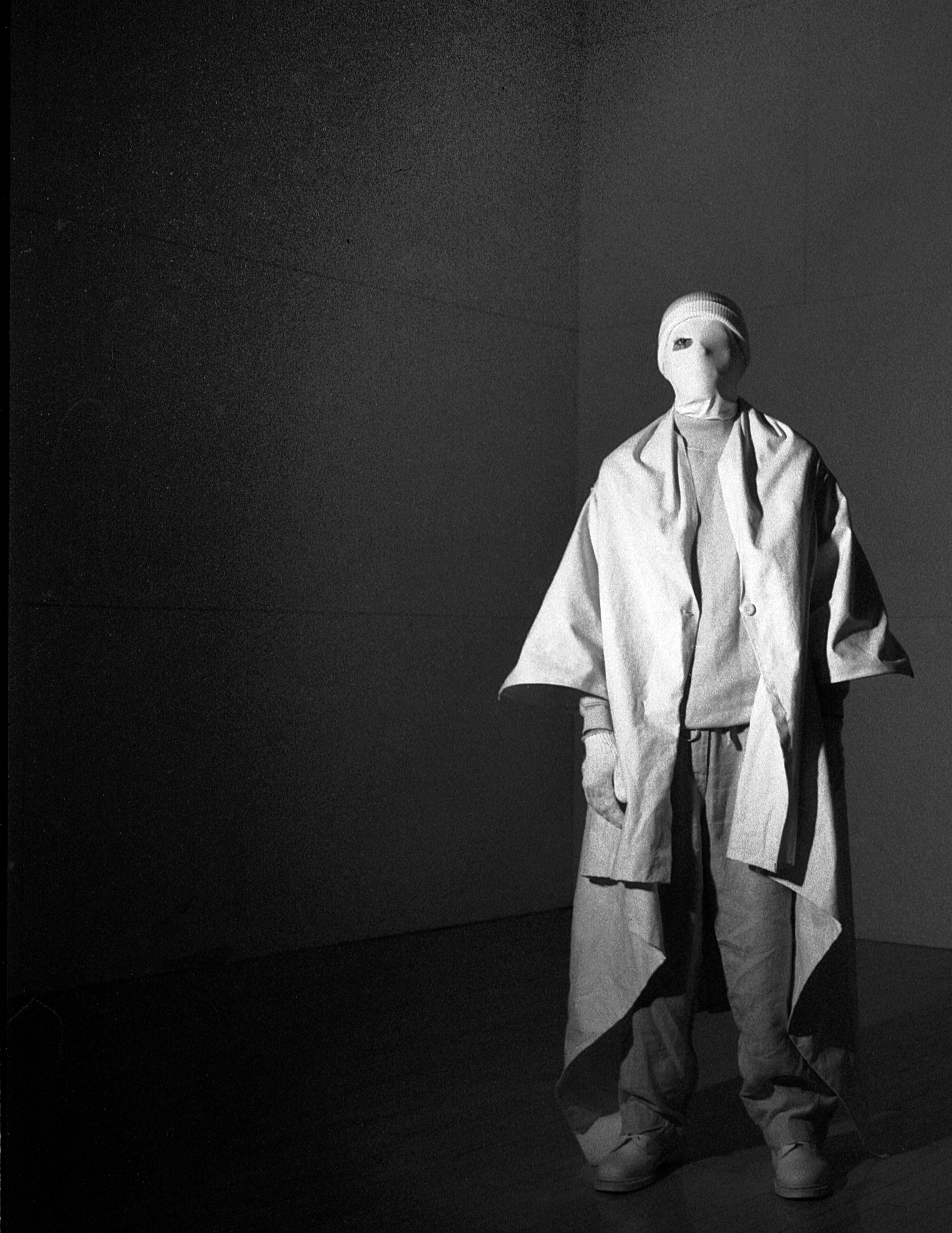

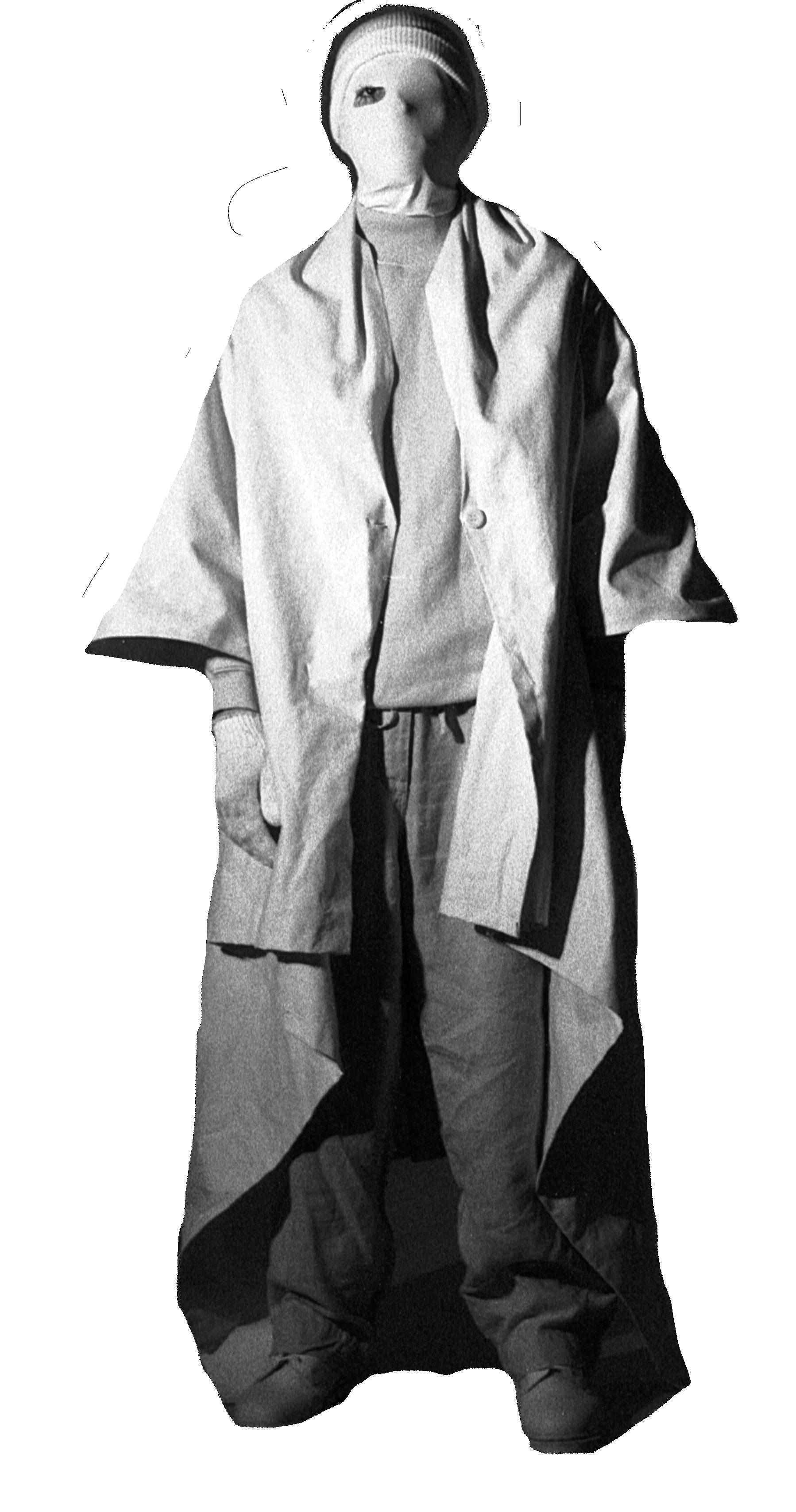








GABBY MACK
SAM MCLEOD
FASHION
ANASTASIA HERNANDO
DHRUV VERMA VIDEO
SAMIN HASSAN
GRAPHIC DESIGNER
KIMI LILLIOS MODEL
JACK RANDEL


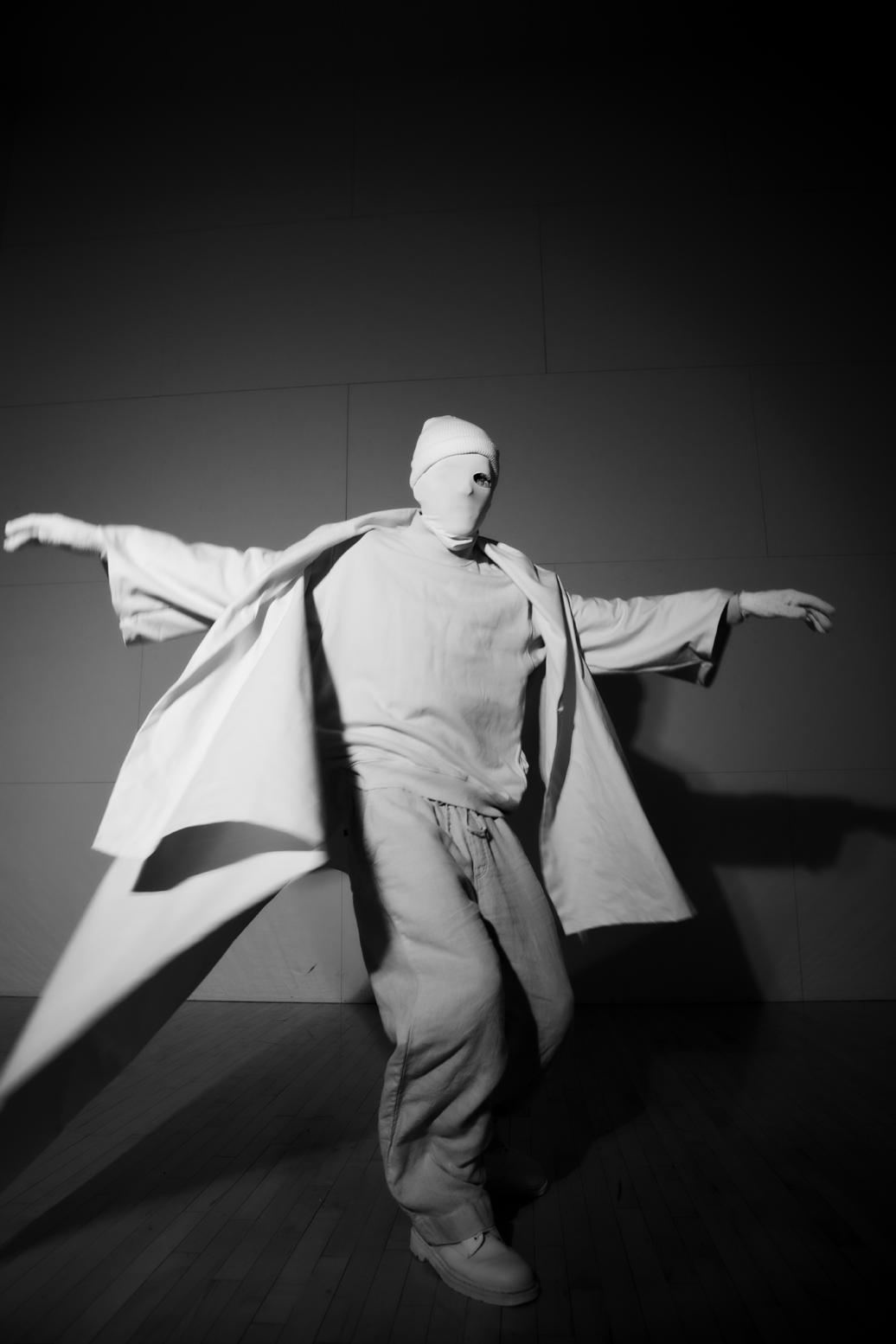




A bedroom is fertile terrain which promotes the growth of its occupant and their passions, comforts, relationships, and fears. As your freshly rested feet hit the familiar floor, the space greets you good morning. After long days trudging through the slush on the streets and in your brain, your bedroom welcomes you home. Rest, it sings as your head hits the pillow.
You dream.
We asked our Features writers to speak about their bedrooms: how the space evokes a myriad of emotions. These self-titled works explore familiarity, consistency, fleetingness, and comfort between a space and its occupant(s). As you read, think about how your room may or may not be a reflection of you, your inner thoughts, and the world around you.
My bedroom was an addition to the living room: narrow, with paper thin walls and a window that slammed down on my fingers when I once tried to open it. It was also constructed around the fireplace. Unfortunately, I couldn’t utilize the space. The chimney was built at an angle such that it would’ve trapped smoke and was ultimately deemed a fire hazard. So, naturally, something else had to reside behind the golden stained glass. Many guests came and went from the fireplace. Insects, rain, and even a raccoon managed to find its way in. However, there was only one permanent resident. As a child, I’d lay awake in my bed, curling into myself at the sound of the harsh whistling. The glass would shake and shutter, and I’d pull the covers over my head to burrow down deeper into the comfort of my cocoon. I’d imagine the wind with long fingers and sharp nails, tapping on the glass, demanding to be let in. Years later, I find myself awake, lying in a strange bed in an unfamiliar room, the window cracked. My chest aches with longing to be home, and I fear the unknown. Until the wind howls, and warmth engulfes my soul, like pure honey flooding my veins. The once minatory force has developed into something softer, sweeter. Now, he sings me a lullaby, rhythmic and haunting, comforting me with the presence of an old friend. My childhood fears are gone, and in their place, profound nostalgia. I hold onto distorted memories from my bedroom, once frightening and now utterly saccharine. He knocks against the pane and this time, I invite him inside.
It’s my favorite place to be. Every time I fly the 16 exhausting hours, I think about the destination I’m going to reach—the room I spent 6 years laughing and crying in, decorating, and building my life in. I’ve painted those walls and sullied them with dirt from my feet. I’ve stuck pictures on them only to be torn down a couple of months later. I’ve made my mark in that room, the little space of the world that I feel is carved out just for me. I’ve worked on the mandala on the wall for months and spent years picking the TV shows that were worthy enough to have a poster on the wall. My room, that wall with the mandala, the collection of posters and images—they have all grown with me and carry the memories of friendships found and forgotten, morphing to match the person I was at every point in my life. Now, though, that room has been paused in time. I get to go back and add little things here and there but that room now only provides the solace of reminding me who I was at 19 and why I had to leave.


SINYU DENG
NOLAN LOPEZ
ALEX KIM
FASHION
MINH PHAN
BEAUTY
ELISSA LI
GRAPHIC DESIGNER
MARGARET LAAKSO
MODELS
ELLIE NGASSA
HANNAH BIGRIGG



My dad always told me houses are just empty spaces, that he could leave them, move to the next one and feel nothing. Maybe it was the frequency that we moved that helped him develop this muscle. My mom was always more emotionally tied to our spaces, but was strong and optimistic when moving had to be done. 17 moves means 17 bedrooms means 17 attempts at creating a feeling of comfort amidst the constant change. They say the more you move the less random shit you have. Besides my clothing collection, this definitely holds up. Everytime I packed up a room, my life became more and more consolidated. This consolidation revealed which possessions are truly important. When people ask you, what can’t be replaced? Those items are what survived my childhood of moving. I will shamelessly admit that the baby blanket gifted to me by my grammie is one of those items. I’ve thought to myself, it would be impossible to repurchase it, find something that smelled the same and gave me that feeling of stability I so desperately craved growing up. It turns out, my dad was right. Houses and the walls that form them are just spaces, spaces that can comfort you when filled with meaningful objects. No matter where I was, that damn blanket was innear reach, and I am comfortable enough in my young adulthood to admit it.
Trinkets! Trinkets! Trinkets! If my love language is gift giving, I practice self love with unprompted presents. Presents from the thrift. The homegoods and collectables are my safe space. Porcelain teapots and shiny glasses line the aisles. One trinket catches my glance. Our eyes meet. A warm glistening spotlight shines down to illuminate her in all her glory: a porcelain swan. This time yellow. A new color, score! I snatch her up without hesitation. You’re comin’ home with me. Protected on the ride home by a pile of old grandma clothes I do not need. Inside the walls of my chamber, a shelf awaits its newest arrival. One swan, two swan, red swan, blue swan. To my friends I’m a hoarder, to me I’m a collector. “There is no ethical consumption under capitalism.” My favorite method of easing my buyers’ guilt. I find comfort in the tchotchkes inhabiting every free surface. Some spanning back to the ‘good ol’ days.’ As does my aptly named baby blanket, “blankie,” lying on the bed. Next to her, my newest plushie, a swan, of course. A haven for lost toys. Also known as crap your grandma should’ve donated 20 years ago. In 50 years, I will be the ultimate crazy bird lady. My swan trinket collection will be revered by all who have the pleasure of visiting my home. Maybe someday I will learn to let go. But today is not that day.
Listen to that! at last the rain had arrived / with the sound of applause. I dreamed / of holding hands with it / walking and swimming with it / from the window in my room / having lost my rhythm, yet / gifted this steady, thrumming beat. / I felt alive sitting still in the rain / I could start / swimming upward, goodness, I thought. / I don’t want anything / I felt in harmony with the world.
Suddenly the wind began to buckle my sheets / a family of spiders retreated into the walls / my cat cranberry woke up and stretched / papers lifted and danced / and the rain / it began to fly sideways into my body / knocking me into a memory.
I’m holding my mother’s hand / on a beach / and cranberry is there too. / the oceans begin to rise / soon it’s up to our ankles.
There’s a man selling paddle boards. / we paddle past the school, which has flooded and students are swimming naked / we paddle by a café, where the owner is handing out hot chocolate / we paddle to a hill, where the current flows upward / we take a break while the current carries us / and we sit watching the view rising from the top.
We paddle back down again, past the school / where the kids have left and gone home for the day / we return to the beach and find my mother has gone. / cranberry meows at me, and he wants to stay / so I leave him there, and he paddles away.
I walk up to my door, take off my wet shoes / head up to my room, where it’s lonely / my bed is on the floor / winter again, time and family lost. / but then I hear the sound of raining / and I poke my head out the window / climb up on the deck / and find the world waiting for me / waiting still / I look up and see.
Ode to my bed,

Who listens with interest as I recite bad poetry against night’s silence. who’s happy to listen. who holds me like a pearl as the light of morning hits my squinting eyes. who holds me still, after I growl and bury my head under the pillow. who allows me to be most vulnerable. who doesn’t mind my quivering, out of sadness, fear, pain, pleasure. who knows that some days, I will never leave. who does not judge me on those days. who rests on nights when I clutch another’s sheets, inhaling foreign laundry detergent and sweat. who knows that sometimes it’s healthy to be apart. who doesn’t recoil when blood seeps through my pajamas and leaves a dark stain on the mattress. who understands that sometimes, it feels better to just bleed. Who provides silence after the day’s shouting.
Ode to the fertile soil from which I bloom in the morning and wither into at night. Ode to the garden of dreams.
know which version of you I’m going to get. There was a time when I knew exactly how you felt, when I could anticipate which weapon you’d employ against me, when you didn’t even try to put on a front of allyship.
Perhaps that afternoon’s mode of attack would be unsolicited commentary on the food my mom had packed me. I would take the top of my Tupperware off, exposing my soba noodles for all the juniors at the outside lunch tables to see. You’d gag and say it looked like worms, and I’d swirl my shame around a plastic fork until I lost my appetite and covered it up again. I’d spend the next two periods wondering how to ask my mom to start packing me sandwiches instead without hurting her feelings.
Or maybe, since I had just gotten my driver’s license and was on a high from nearly blowing out my car speakers, you’d undercut my mood in one fell swoop with the words, “I would never drive with you. You’re Asian and a woman.”
Sometimes you liked to show me those videos of strangers telling me how the one race they would never date was Asian. Did you get off on my doubt, wondering if anyone would ever find me attractive? Or did you get off on my shame, wishing I could look like my white friends?
Other days, if you were feeling particularly vicious, you would infiltrate the brains of my own people, using other East Asian girls to level backhanded compliments at me, like, “Wow, you’re really pretty for being Asian.”
That was something like five years ago.
I woke up to the news that eight people, including six women of Asian descent, were killed in a series of shootings at spas in the Atlanta area. The Cherokee
County Sheriff’s Captain Jay Baker attributed the killings to the murderer having a “really bad day.”
This came after the news that three people, including a 91-year-old man, were assaulted in Oakland Chinatown.
That a 61-year-old Filipino man was slashed across the face with a box cutter on the subway in New York, so severely that he received one hundred stitches. Nobody on the train helped him.
That an 84-year-old Thai man, Vicha Ratanapakdee, was enjoying his morning walk in San Francisco when he was violently shoved to the ground and hit his head on the pavement. He never made it home to his daughter and two grandsons.
I thanked God my grandparents never had to see this day.
You didn’t acknowledge the attacks. You go by “Yuki,” or “Mayumi,” or “Mochi,” online, and your profile picture is an East Asian girl you pulled off Tumblr. You’re white.
It’s 2023, and you like me, finally! Everyone has yellow fever, and I cater to that craving. You tattoo kanji on your white skin—does it mean “seven rings” or “shichirin”? You’re not too sure, but it’s cute, right? You slant your eyes with makeup or a slight pull at their corners for social media accolades, just like you used to do when you’d sing, “Chinese, Japanese, Americanese,” to me on the playground. You buy clothes from Western brands that capitalize off kawaii culture and Harajuku fashion, and you hang halfnaked depictions of East Asian girls on your walls. You find me sexy, but I remember your last girlfriend being Asian, too.
I am a marketing scheme, a product on a shelf, an aesthetic, a fetish. You call it “appreciation,” sometimes even “representation.” But your attempts to look like me overlook the downfalls that come with my features, like the man who shoves past me on the sidewalk and brazenly remarks that I should go back to Japan. Your surface-level so-called “celebration” of my culture for being cute has little impact when you turn a blind eye to the senseless violence against my people, which has grown evermore commonplace since that spring three years ago.
So do you really love me now? When push comes to shove, will you laser off your tattoo, discard your anime and kogyaru-inspired schoolgirl skirts, and make room for the next fad? I’m waiting for the day my time is up and my culture is no longer in vogue. I’m waiting for that day. I’m beckoning it to come faster.

Aunt Marilyn brushes water over the edges of the egg roll wrapper, following my mom’s lead. She scoops the filling from the bowl, packs it into the center, and folds the corners inward. She places it atop our collective stack of egg rolls, ready to fry to a crisp golden brown. She is from my dad’s side of the family, the White side.
Mom jokes that when Lola (Tagalog, “grandma”) was alive, she was particular, always quietly swiping my and Mom’s rolls from the bowl and rewrapping them. But Aunt Marilyn’s wrap is tight; it’s careful. I think Lola would have been proud. This is the version I hope to always have.



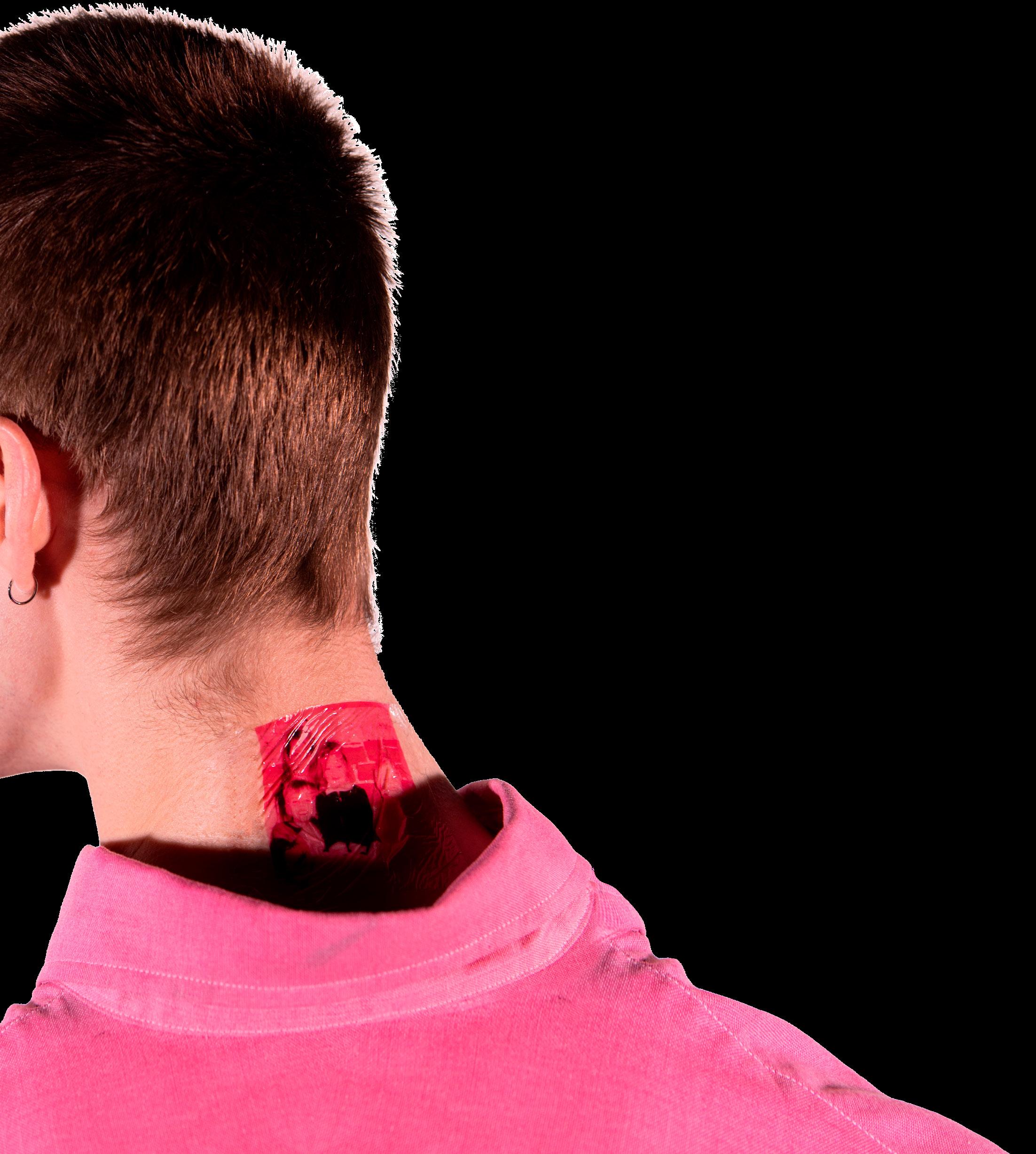




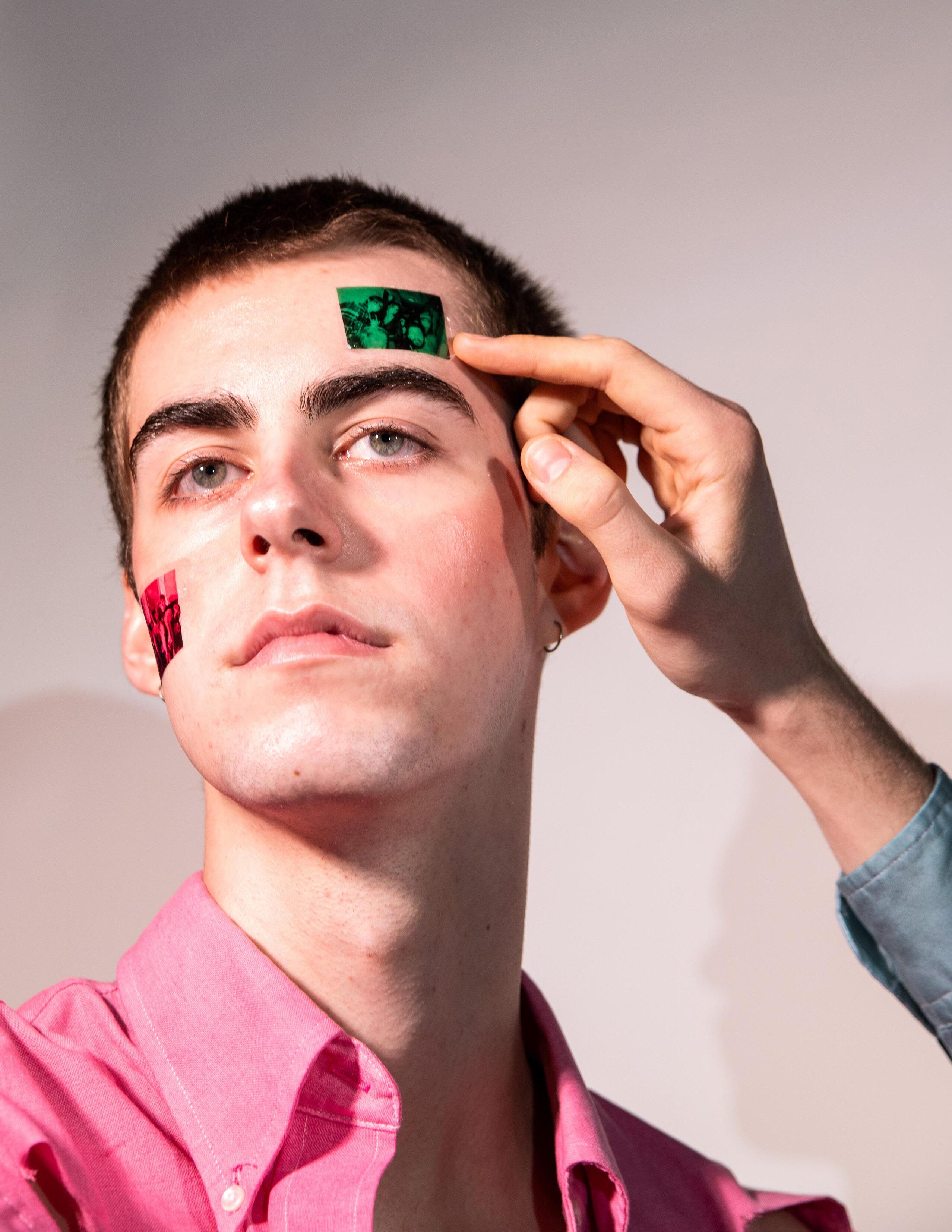

STYLISTS
ANASTASIA HERNANDO
DHRUV VERMA PHOTOGRAPHERS

SAM MCLEOD
GABBY MACK
GRAPHIC DESIGNER
NICK PIPPEN
MODEL
GEORGE KRIPPNER
GUS BOYER

To be a writer is to be intentional in everything you do and say. Writers deliberately choose what elements of a story are revealed to the reader and what remains secret. For this reason, I cherish the pieces of them that I’m given the opportunity to bear witness to. I hope they do the same.

There is a lighthearted aura in the air on our walk to the bookstore. Carefree strides and beaming smiles warm the street’s otherwise chilly atmosphere as we pass by; snowflakes delicately landing in our hair makes the scene all the more delightful. A blush of embarrassment swells on their cheeks as I point out the bar we’ve sworn off after one too many disastrous nights, and I cackle obnoxiously when they repeat an inside joke that wouldn’t be funny to anyone else. But these aren’t the details that stick out to me.
I focus on their mannerisms that almost certainly go unnoticed to strangers. Either consciously or subconsciously, they slow their pace to match mine. Our steps fall in sync; I choose to believe it was a deliberate effort. The blood rushing into their cheeks, seemingly of embarrassment, masks undertones of shyness and longing. Their hands float dangerously close to mine, daring to graze against each other; or are my hands floating dangerously close to theirs? With my radiant smile consistently paralleling theirs, my eyes devoted to admiring their existence, and my laugh too boisterous of a response for what they said, do they also take notice of my own mannerisms?
The door of the hole-in-the-wall bookstore chimes as we enter. The entrance was right in front of us, but we almost missed it because our eyes were too distracted by the grand storefronts imploring our attention. The shop is cozy and inviting despite the clutter and dust that covers the books on the highest shelves. Without a word to each other, we agree that this underappreciated bookstore will become our new hidden gem.
We look through rows upon rows of gently-used paperbacks, classics, and first editions. They hand me a copy of J.D. Salinger’s The Catcher in the Rye and I can’t help but grin. We could spend hours defending Holden Caulfield and empathizing with his difficulties growing up. Their choice seems simple, but it’s perfect for individuals searching for connection, struggling to come to terms with the past, and attempting to live in the midst of hardship; we, too, wonder where the ducks go. Nostalgia and fondness overcoming us, we both purchase copies to re-read together.
There’s still time to waste, so we decide to visit the coffee shop next door. I have yet to acquire the taste for coffee, so I grab a table while they order. The unfamiliar aroma of coffee overwhelms my sense of smell. I try to focus my attention on more pleasant sensory experiences of the day; our fingers just centimeters apart on the walk, our eyes almost failing to recognize what’s right in front of us, and the sound of banter
escaping from their lips. It leaves a sweet taste in my mouth. They finally return with a vanilla latte and, to my surprise, a chocolate chip cookie that they place in front of me. Delighted at this thoughtful surprise, I smile. Outwardly, I express my gratitude for this treat; inwardly, it’s for so much more. How fortunate am I to have met a once-stranger that has now become so much to me? A once-stranger that has become the central figure in most of my writing. It’s muscle memory, the way I effortlessly recount their beauty, time and time again. Being next to them, writing about them, any second my heart devotes to them—it’s a head high, like the simple pleasure of petting a sun-warmed cat.
For these reasons, I feel somewhat disheartened as I feel the day coming to an end. We arrive home just as the sun sets and the snow subsides. Sitting across from each other, we rehash the day’s events; we remark that we’ll have to visit our hidden gem more often, and we reminisce over the warmth of the coffee shop juxtaposed to the wet snowflakes falling outside. A flicker of eye contact seems to last a moment too long. They flip through their copy of The Catcher in the Rye and half-heartedly claim that they will read a few chapters tonight. I laugh, instinctively leaning in closer to demonstrate my interest in the conversation—rather, my interest in them—and commitment to do the same.
The clock counts the hours as they elapse, but I could’ve sworn that no more than one passed. Inevitably, they stand up and announce that it’s time they head off. My mouth spits off playful pardons, anything to make them laugh. My eyes tell a different story; sullen, downcast, and looking anywhere but at them. The second they depart, the endearing smile dissipates from my face.
A tsunami of thoughts floods the shores of my mind. Imagine if they had stayed for just an hour longer. Better yet, if they had stayed for a while. Perhaps I could finally determine if my hands were too close, or not close enough. Maybe they would reveal the secret parts, the scary parts, of the inner workings of their mind; maybe I would reveal mine. Maybe we would know each other in a new light.
I cozy up under the covers, but I struggle to fall asleep. Maybe we could drive off with the windows down, indifferent to the wind messing our hair. The cool air would send a chill up my spine, but it wouldn’t bother me. They would feel what I feel, and it would be simultaneously beautiful and soul-crushing. Escaping everyone’s expectations, we would allow our hands to touch, and we would treasure that flicker of eye contact that lasts too long. They would stay beside me. They would not leave.
For now, I recount our shared subtleties alone and through writing. I cling to the lovely moments from the day. I carefully strategize my plan of action; what shall I share, and what remains secret? I document intimacy on paper. That is what it means to be a writer, after all.
WRITER
CATHERINE AUGUST
GRAPHIC DESIGNER

KAMRYN ALMASY
ILLUSTRATOR
RINO FUJIMOTO





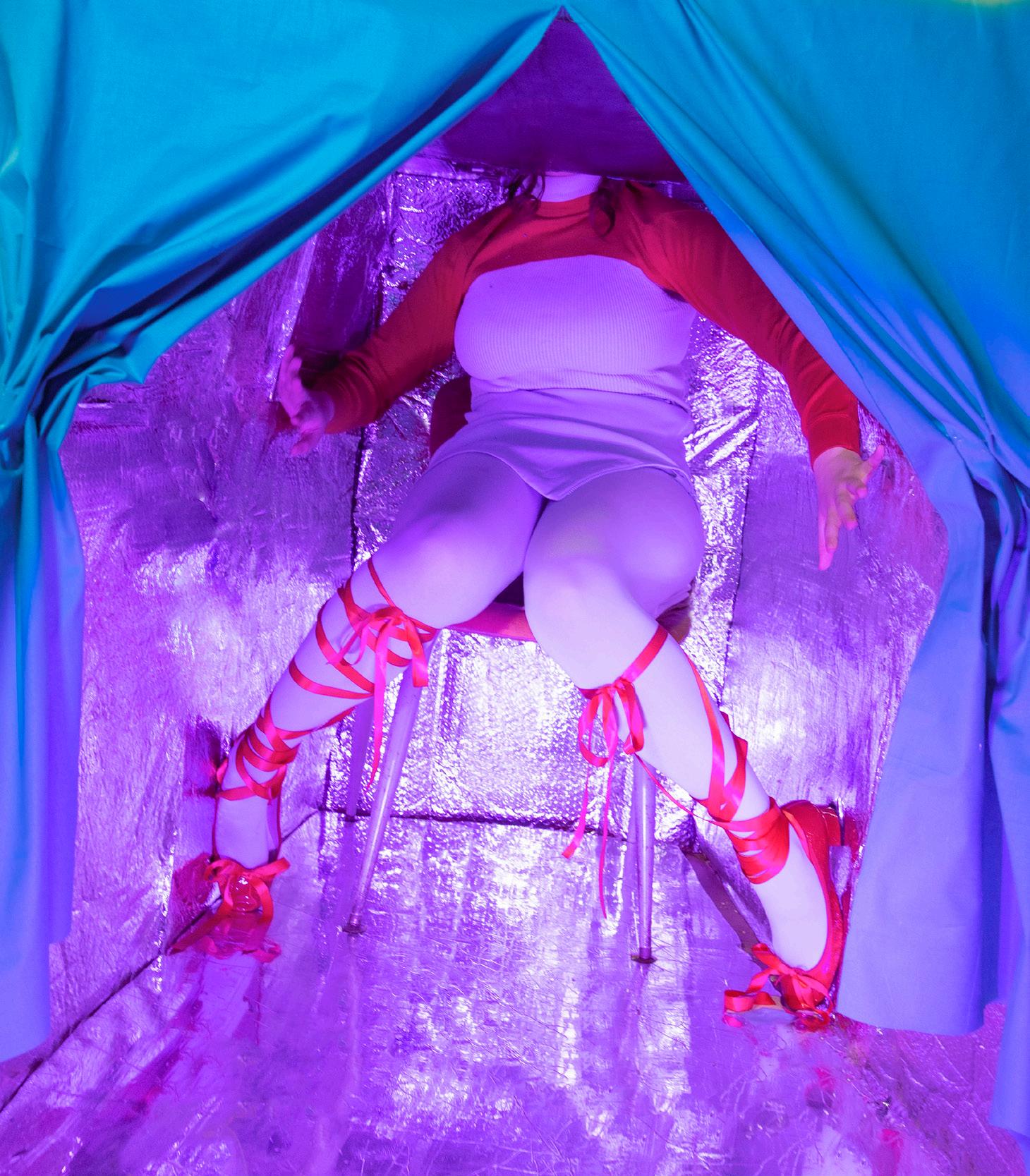




Halfway down my Instagram feed, posted on March 25th of 2022, there’s a rather innocent-looking carousel of photos: the orange sky above my sorority house, a mirror selfie, and a short video of the State St. theater at night. The caption is a simple, colorful, and yet pseudo-casual mix of emojis ultimately offering absolutely zero insight into the emotions (poor) of the poster (me). The darkness of the Michigan winter had been carefully wiped away with deceiving Lightroom presets until it no longer plagued my photos. To everyone else, this post seems lighthearted and fun. To everyone else, my life is as bright as the light on the theater’s marquee. To me, this post is completely fake. I have a strange relationship with my Instagram. There is a certain pride I feel in the cohesiveness of the bright color scheme, of the curated persona of socialness and spontaneous adventure that a stranger might gather with a quick glance at it. But, while every photo I have posted represents some real moment in my life, the realness gets lost in the 100s of others it was carefully selected from.

My Instagram is a manifestation of my perfectionist tendencies. There isn’t a hair out of place, a makeup-free selfie, or bad lighting to be seen anywhere. Sometimes it takes me hours to touch–up photos, select the order to post them in and brainstorm a witty enough caption that reads as authentic without trying too hard. Is this really something I should allow myself to claim with pride?
I began this article intending to find a common thread, with the belief that a fake version of every person existed on their social media. I had this assumption that “faking” social media posts was just something we all did. It didn’t actually matter how much of yourself was real or not as long as you looked happy online. We all had falseness to admit to. Perhaps, by the end of a thousand-something word, I would have convinced you that it’s impossible to engage ethically on social media. That the only solution might be to delete the apps from our phones and revert back to the days of dial-up internet, IMing, and landlines to regain our humanity.

Plenty of academics are ready to convince you just that. A quick Google search is evidence enough that scholarship agrees social media probably isn’t great for you, good is even a stretch for many. Just this past January, The New York Times published a piece titled “Social Media Use Is Linked to Brain Changes in Teens, Research Finds.” The number of times we check our phone in a singular day is so high that researchers cannot quite settle on a singular, definitive number.1. Dr. Paula Durlosky sees online interactions as sticking users on a metaphorical hamster wheel. Each time we log on and view hundreds of posts, what we’re actually doing is turning to various forms of social media to produce feelings of “emotional warmth and reassurance.” 2
We continue to indulge ourselves either to prove via “likes” that people do in fact like us. We scroll and scroll and scroll to convince ourselves that no one’s life is cooler than our own. We continue these interactions with the intention that one day we’ll open social media and close our app feeling like enough. Durlosky believes we never will or can. Though, to be honest, even with this knowledge and fundamental understanding that a walk in the Arb would be much more productive than another hour on social media, you’ll have to pry my Instagram from my cold dead hands before I quit scrolling. Maybe we should start asking ourselves, where does the middle ground lie? How do we pull back the curtain and the facade of fakeness? Social media has two sides: what we see and what we publish. It’s what you see, on a friend’s story on a Saturday night when had to stay in to write an essay or cram for a midterm, that builds that gut-wrenching, horrid quote-unquote Fear of Missing Out, otherwise known as FoMO. Ironically, the constant need to escape feeling FoMO is exactly what motivates us to post our every fleeting mood, thought, and movement on our Snapchat stories or Instagram feeds, likely causing this icky feeling in someone else. FoMO has been proven influential enough to sway consumers’ decisions. In fact, a study published in January 2023 found that reported experience of FoMO positively corresponded with increased shopping habits and favorable attitudes toward products.3.

Naturally, I drew my own, less-scientifically-backed, conclusions: this need to escape FoMO leads most – if not all – of us to fake posts every now and then. I started interviewing my friends, ready to hear them reiterate my thoughts.


Those nights have grown infamous within our friend group but the nights we don’t discuss, the boring, uneventful nights have gone forgotten about. That isn’t to say they didn’t occur or weren’t enjoyable hours spent with people I love deeply but they’ve now faded away in my memory. You can’t hold onto everything. You cannot remember every waking moment with enough excruciating detail to paint a watercolor of the exact scene. But, somehow, with the power of my iPhone camera I thought I could beat this.
Against my desire to arrive at some firm conclusion, I don’t think I can offer anyone a simple answer about how, or if we really should be using social media. I can tell you what the experts think. I’ll also admit even after the research that built this article, I’m not going to change much about my social media habits in accordance with what they have to say. However, there is something to be said about striving for authenticity in all aspects of your life. Maybe the truth will set you free? I don’t remember who said that but I’m guessing Instagram probably didn’t exist in their time. So rather, do what feels good. And for me, perhaps that means I keep posting pictures of sunsets from two months ago with emojis that mean nothing. I’ll let you know when I figure it out exactly.







STYLISTS
ANASTASIA HERNANDO
DHRUV VERMA
PHOTOGRAPHERS
GABBY MACK
SAM MCLEOD
BEAUTY ELISSA LI
VIDEO
SAM RAO
GRAPHIC DESIGN

GABBY MACK
SAM MCLEOD
MODELS
JACKIE CHO
OLAH HASSAN


There are many people that we will never meet and never even know that they exist. Their lives will go on without our knowledge, and our lives will go on without theirs. They are a mere statistic to us. They are members of the staggering 8 billion that live on this planet with us, and almost all of these people will remain “strangers” to us. However, the line between someone who is a “stranger” and someone who is “known” to us can be very fine, and it can take very little to feel familiar with someone. Usually a name, a face, and a few dispersed facts or even a recurring spotting can allow us to claim that we know someone and relieve them of their “stranger” status in our minds.

The word “stranger” itself is daunting and dramatic, and represents the unknown and unfamiliar. We often proceed with caution when interacting with them because they can’t be trusted yet. However, this connotation of the word strangers characterizes them as one-dimensional, when in reality, they are anything but. They are not always just scary or unfamiliar. In fact, they are very similar to us, and are the people that surround us in our everyday life: the students in our big lectures, the cashiers that check us out at the store, the people we pass on the street. As a result, we are in some way connected to them, brought together by some common experience. At one point, my closest friends were all strangers to me, and were nothing more than someone seated next to me in class, or someone I met at a party. I will be forever grateful for these random common experiences, though, because they brought me an abundance of people that I can’t imagine my life without.
A few months ago, I had a conversation about the topic of strangers with one of my close friends. We were walking past the library and talked about nothing and everything, which had quickly become our favorite pastime. As we walked, we observed the people around us, commenting on the outfits we liked and noting how certain strangers looked like our friends or people from our classes. As we talked more, a peculiar thought struck me: my friend was always falling in love with strangers. Ok, maybe not actually falling in love, but always noticing when others would hold eye contact for a few seconds too long, when the barista makes small talk, or genuinely enjoying conversations with random people on plane rides.
This conversation replayed in my mind all day, and I thought about how less than a year ago, we too were just strangers. Six months ago, we met by chance, but it took us a while to actually know each other. We met in class, when our teacher assigned us to sit next to each other, and although our relationship started with a quick greeting here and there, we quickly bonded over our love for books. Other than this class, that was our key common experience. A few weeks into this class, I walked into class after missing class the previous week and I heard “Hey, we missed you last week.” That was the moment I knew we were no longer strangers.
Throughout our friendship, I had begun to respect the way that my friend appreciates the strangers in their life. They’re able to appreciate these strangers in a way that I often cannot. The difference between my friend and I’s view of strangers is how they admire them for who these people portray themselves to be. I, on the other hand, appreciate them for the endless possibilities that they offer to me.
Although I have become appreciative of how strangers can become, my relationship with the concept of strangers as a whole has not always been so positive. For much of my life, I allowed these strangers to be the scary, one-dimensional figures implied by its connotation. A few years ago, interacting with strangers would have been something that would make my heart race and fill my mind with anxious thoughts. If I were ever surrounded by them, my eyes would constantly search for a familiar face to ease my mind. I had rarely met a stranger that I could trust, and I had never watched someone that used to be a stranger slowly become an integral part of life. But in the last few years, I’ve found good friends in so many strangers that I began to rethink my opinion of them.
I now find beauty in strangers because I never know the impact that they’ll have on my life. The extent of their impact remains a mystery that is slowly revealed with time. Sometimes someone so unsuspecting can take us by surprise and change us in ways we would have never expected. And sometimes these interactions with strangers won’t really change us at all. But that doesn’t make the small moments meaningless. Sometimes we make eye contact with someone for only a few seconds and smile, but we still rave to our friends about it and allow it to become the subject of our daydreams. Sometimes, someone in passing will complement our outfit, and we remember that moment every time we reach for those pieces of clothing. These moments may not change us, but they do provide us with small moments of joy in a world that can be so intimidating.
After moving to college, I have begun to appreciate the fact that I do not know all of the people around me. They allow my imagination to run wild and inspire me with a child-like sense of wonder about the most irrelevant details of their life. Sometimes I wonder where they’re walking to on the street, or what music they’re listening to while they study or what’s leading them to get on the same flight as me. Every once in a while, I cast them as the main characters of my daydreams, creating stories when I get bored in class, or as the faces of the background characters in my dreams. This imagination and curiosity about the people around me places me in a world

where the possibilities are endless, and allows me to escape from the mundane activities of my everyday life, even if it’s only for a moment.
However, creating stories about these nameless people also grounds me in reality, and helps me grasp overwhelming feelings that I am constantly surrounded by the unknown. I have used them to adjust to an environment that I was wildly unprepared for because they make me feel more connected to the people around me. It makes my world feel a little smaller, and erases feelings of loneliness that would normally surface when surrounded by so many strangers. It makes me feel like these people aren’t so far removed from me, and that maybe we have more things in common than I am able to notice.
These unknown people walk on the same streets and eat in the same restaurants and study in the same buildings as I do. This must mean they aren’t so different from me after all. But this isn’t just a matter of geography. They must love and cry and smile in the same way that I do. They probably have their favorite songs that they listen to when they’re feeling on top of the world, and also ones that they listen to when they feel like the world is crumbling around them. And despite our differences, we have been brought together in some way.
Being surrounded by the “unknown” of strangers is a concept that I will always struggle to fully accept. I will never be able to appreciate every stranger that I interact with, and will never fully find peace when I’m surrounded by so many unfamiliar faces. But my love story with strangers doesn’t have to be a complete and full acceptance of the fact that I don’t know the people around me. My love story forms in those little moments, like when I get a compliment from someone I have just met, or am able to appreciate how a stranger became one of my best friends. Ok, so this may not be an actual love story. But if some of these strangers can make me feel less alone in a world that is ever-changing and unfamiliar, then I can appreciate them for the momentary comfort I can find in our interactions. And while that may not be love, it is the human experience, and at the end of the day, that’s what connects us with the other 8 billion “strangers” on this planet.
Sometimes I smile to myself with a confidence fueled by the jealousy of others. I’m deciding between midnight blue or auburn red when an older lady approaches me in the hair dye section of the drugstore. “Your hair is so long and beautiful,” she says. It has to be the millionth time I’ve heard the exact same phrase, yet I still don’t know the best response to get the other person to stop talking to me. Wanting to walk away, I force a smile across my face and quickly thank her. “Are you buying dye for yourself? That’d be a shame,” she continues. She’s starting to sound like my mother. “I think your natural hair suits you. If I had—” I faintly hear her say amid stomach growls. There’s finally a lull in her rambling, but she’s staring right at me and I can’t remember the last thing she said. “Sorry?” I utter in confusion. “Oh, what products do you use?” she repeats. “Honestly, nothing special. Just shampoo and conditioner.” She looks at me surprised when I fail to acknowledge her previous comments, grabbing a box of midnight bold permanent hair dye and making my way to the self-checkout. As I leave, I twiddle the ends of my hair—with a smirk on my face.
When I arrive back at my apartment, I place everything onto the kitchen countertops and immediately rip open the bag of Chinese takeout I picked up on the way home. I lay out the containers buffet-style on the dining table, with my favorite dish, coconut shrimp, on my right for easy access. I sit down opening the small box of white rice with one hand, chopsticks in the other. I devour my food, because nobody likes a slow eater—I learned that when I was young. “Why are you so slow? I’ve already finished my entire bowl. You haven’t even finished your shrimp yet.” My mother would tire herself out with her competitiveness and begin tapping away at her phone, talking loudly to the person on the other end, leaving me to my own devices. I could’ve chosen to savor the flavor then, but I hurried instead. Little by little, the silence of the barren room nibbles at my consciousness. I turn on the TV for some white noise, though it doesn’t seem to help. So I grab my phone and decide to call a friend. The ringing seems endless, only to be interrupted by an “I’m sorry, but the person you called has a voicemail box that has not been set up yet.” As a replacement, I scroll through my text messages eventually locking eyes on one in particular. “Why don’t you ever call me.” I place my phone facedown on the table and stare blankly at the mounds of food in front of me, as my appetite disappears.
I clean up, adding to the stash of leftovers I have in my fridge. I can’t bring myself to throw anything out, so I place tonight’s dinner alongside the container of week-old chow mein and shut the door. Afterward, I unpack the shopping bags and take my makeshift hair dye kit into the bathroom. I grab an old towel and t-shirt, putting them in-between the hand mirror and box dye that now clutter up the edge of my bathroom counter. With no room left over, I mindlessly place my phone on top of the mirror. I change into the t-shirt, drape the towel over my shoulders, and slowly dampen my hair under the sink. Then, I fluff out any excess moisture and comb through the knots. I open the box of hair dye and fumble with the tiny instructions sheet, trying to figure out what the hell I’m supposed to do. Water drips from my hair onto the paper and it starts to tear. I skim through it quickly, noticing the warning. 24-hour patch test recommended. I can’t be bothered. I toss it onto the counter, put on the disposable gloves, squeeze the colorant into the developer bottle, and shake. With the slightest hint of hesitation, I face the mirror on the wall and begin to apply the dye to my roots.
I find myself holding my breath as I work my way through each strand. I’ve coated more than half of my head at this point. “I have to commit,” I tell myself. I try to admire my reflection, thinking that it’ll validate my hasty decision, but I can’t seem to shake the feeling of disappointment from my mind. “Mom, do you like it?” 12-year-old me had asked, while eagerly entering the car after a seemingly successful salon visit. “She cut too much,” she said. My hairdresser had relieved the tension that my thick hair put on my scalp. “At least it’ll grow back,” she continued. “Yeah. At least it’ll grow back.” I echoed defeatedly. “It could’ve been worse. Your hair could’ve ended up damaged from dye, had I let you color it,” she rambled on. I forced a smile, signaling a silent agreement, but I guess she felt my disillusion. She tried to lighten the mood by suggesting that we go get Chinese food. I quickly agreed, remaining silent for the rest of the car ride, staring at her bleached blonde waves. Finally, I spread the last of the dye.
I take a deep breath and look at myself, stroking the tips of my hair. I imagine my mother’s caresses, her soft touch on the overgrowth.“It’s getting so long,” she said to me a few years ago. I was so overdue for a trim that my hair was full of split ends, but that didn’t matter. She reminded me how lucky I was to have such long, beautiful, thick hair—just like she would when I was a kid. But instead of beaming with my usual childish delight, I saw a flicker of envy in her eyes and retreated. She once told me that jealousy is an unspoken compliment. Yet in that moment, I almost didn’t believe her. While I was at the drugstore, I thought back to our interaction. Acting on impulse, I decided that it’d be good for me to change up my look. Now I’m not so sure.
My thoughts are interrupted by a sudden ringtone. I quickly peel off the disposable gloves, throw them into the trash can, and reach over to grab my phone. As I pull it toward me, I feel the friction of the hand mirror underneath scraping the counter. Before I can react, the mirror falls off the edge and shatters on the floor. “Shit,” I blurt out. My heart begins to race and blood flushes my skin. With my phone in one hand, I use the other to pull the towel from my shoulders and start rapidly sweeping the pieces into a pile. I pick up the call before it goes silent. I won’t remember to call back later. “Just one second,” I tell them. I set the phone down, taking a moment to gather the shards. In the fragments, I find my mother’s eyes staring back at me. Exchanging glances with the peculiar image, I lift the phone up and say—“Hello?” On the other end, a familiar voice brings a reassuring smile to my broken reflection. “How are you?” my mother asks. I close my eyes, inhaling and exhaling, as my heart slows. She has no idea.







STYLISTS
ANASTASIA HERNANDO
DHRUV VERMA PHOTOGRAPHERS
GABBY MACK
SAM MCLEOD
BEAUTY
JANAE DYAS VIDEO

CARLY NICHOLS
GRAPHIC DESIGN
GABBY MACK
MODEL
MIRIAM WILLIAMS

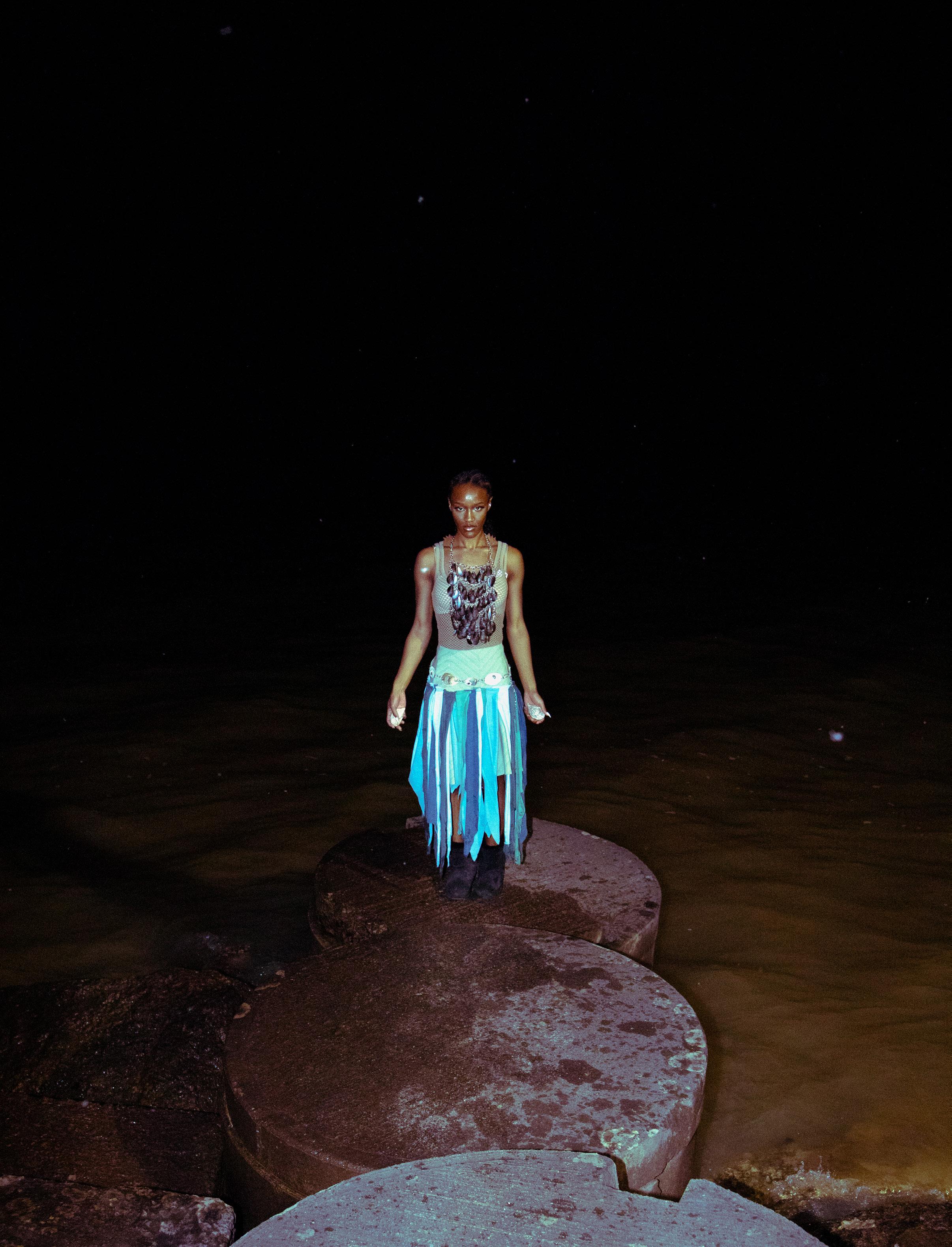

Duringthe making of Interiors // Exteriors, the print team and I explored our relationship with the world around us, both in tandem and in opposition. We reflected on what we take in and how we internalize it, as well as how we express ourselves to the outside world. In researching for this project, I came across Annie Ernaux’s Exteriors, which intrigued me with its journal entries documenting seven years of peoplewatching. Despite never interacting with these individuals beyond observing their exteriors, Ernaux managed to establish a sense of intimacy through her writing. She wrote, “I realize that I am forever combing reality for signs of literature.”
One of our main sources of inspiration for this issue was Alexander McQueen’s Voss (S/S 2001). The collection delves into the ways in which we internalize the world around us and the divide that exists between humans and our surroundings. McQueen incorporated natural materials and utilized objects such as razor clam, mussels, and oyster shells, which we referenced directly in our shoot How to Love a Siren? The collection was a confessional piece for McQueen to explore the fragility of mental health within a chaotic world. This was exemplified by a corset made entirely of glass that, while appearing as a piece of armor, would cause severe injury to the model if she were to trip. Many of the models in the collection wore nude head-wraps that covered their hair and facial features, which we replicated in Breathing Space. The uniformity of this suggested that while this was a deeply personal collection, these are shared human experiences.
The print team and I were deeply inspired by the confessional nature of McQueen’s work, and through this issue, we share a piece of ourselves with you. For many of us, this serves as our final project for both SHEI and our undergraduate experience at the University of Michigan. I am grateful to have had the opportunity to work so closely with the print team during my final year at Michigan. You have all been a constant source of inspiration to me.
Interiors // Exteriors is about finding literature within reality and giving a voice to the nameless. We are no more than the man in the crowd; what can we do to be heard?
Thank you for taking the time to view our work.
I hope you enjoy it,
Creative Director

